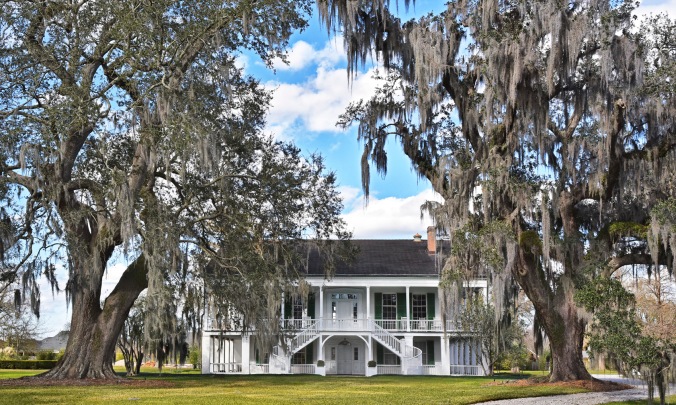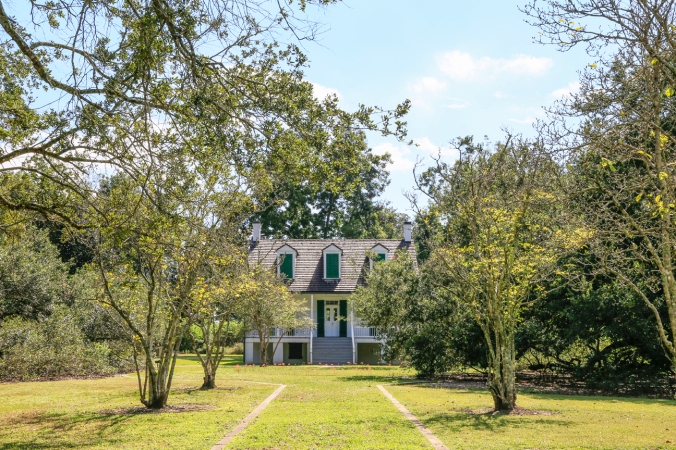
Rienzi Plantation house flanked by two giant live oaks
Rienzi Plantation Oaks—Two of the oaks on the grounds at Rienzi are registered with the Live Oak Society and one, named “The Pilgrimage Oak,” is one of the Live Oak Society’s original 119 member trees compiled by Dr. Edwin Lewis Stephens before his death. (Read about the Live Oak Society here.) Rienzi’s oaks were probably planted around 1800, making them at least 200 years old and possibly older.

Pilgrimage Oak, study 1
About Rienzi Plantation—Around 1794, Henry Schuyler Thibodeaux received a Spanish land grant on Bayou Lafourche for property east of the Bayou where he built a home for his wife Félicité and developed a plantation he named Saint Bridget. In time, he accumulated more land including property on the west bank of the bayou.

Rienzi Plantation House and oak, west corner
Three Governors who lived at Rienzi—Besides being an area planter, Henry S. Thibodaux became the namesake for the city of “Thibodeauxville” when he donated land for development of the village center, now downtown Thibodaux. Henry S. Thibodeaux (he later shortened the spelling to Thibodaux) became a local Justice of the Peace, served in the Louisiana territorial legislature, and as a state senator. In 1824 while serving as president of the state senate, Thibodaux stepped in as the acting fourth governor of Louisiana when the third governor, Thomas B. Robertson, resigned to accept an appointment as a federal judge.

Jane Amundson Lafargue Oak, b&w study
Henry S. Thibodaux sold his plantation around 1814 to William Fields, a businessman, and architect who is attributed with building the current plantation home. In 1824, William Fields sold the house and property to Henry Johnson, an attorney, and politician who was elected the fifth governor of Louisiana that same year replacing acting Governor, Henry S. Thibodaux. Eleven years later in 1835, Johnson sold the property to Thomas Bibb, who had been the second governor of Alabama from 1820 to 1821. It’s under Bibb’s ownership that the plantation was first called “Rienzi.” The name supposedly came from a novel and Wagner opera popular during the 1840s about a 14th-century Italian patriot.

Rienzi Plantation House and two oaks, east corner
The next owner, Juan Ignacio de Egana, was possibly the source of a romantic legend which grew over time about the Rienzi home and the origin of its unusual design. The legend states that the house was constructed by Spanish architects at the request of Spanish Queen Maria Louisa as a possible retreat for her in the event of a Spanish defeat in the Napoleonic Wars. The legend states that her agent, Juan Ygnacio de Egana, took possession of the home, after Louisiana was ceded to France and sold to the United States, and lived there for nearly fifty years. (source: Wikipedia)
Architecturally, Rienzi’s design is unusual for plantation homes of the period. It has cruciform (crossing) hallways on both the first and second floor and brick walls throughout (inner and outer walls). And the walls of the home are aligned to the four cardinal directions. Since being purchased by the current owner in 2012, the home has undergone significant restoration.


